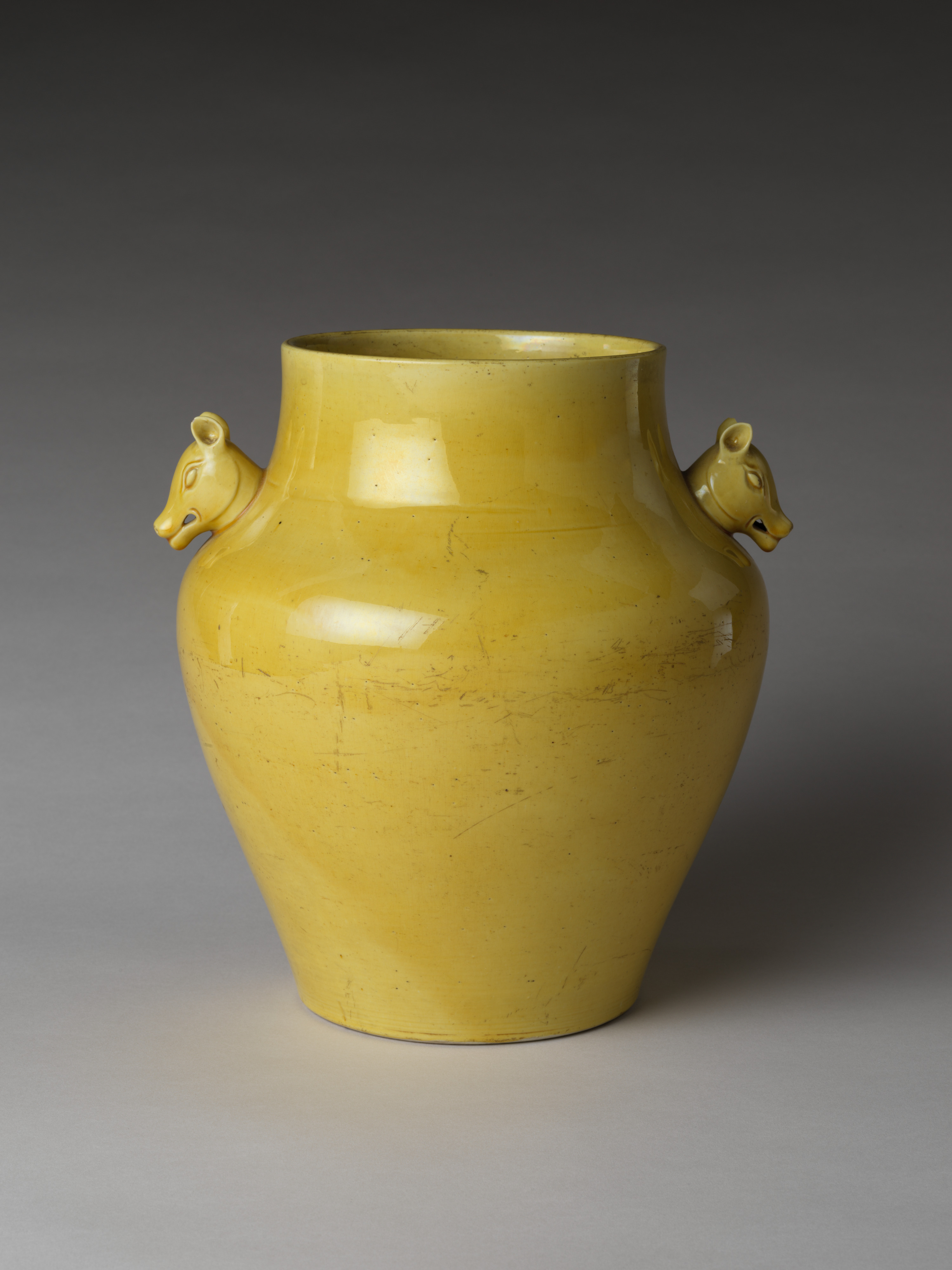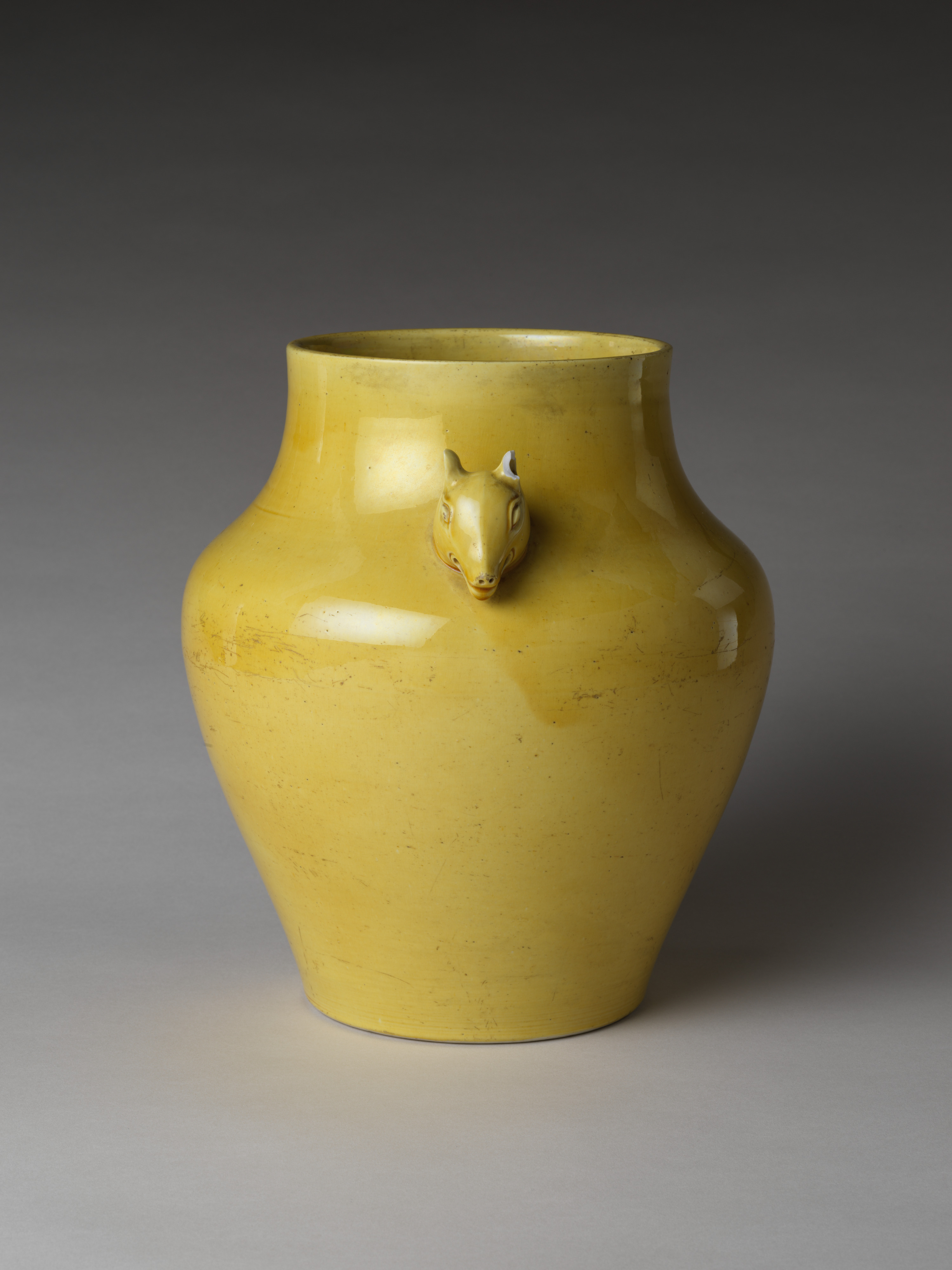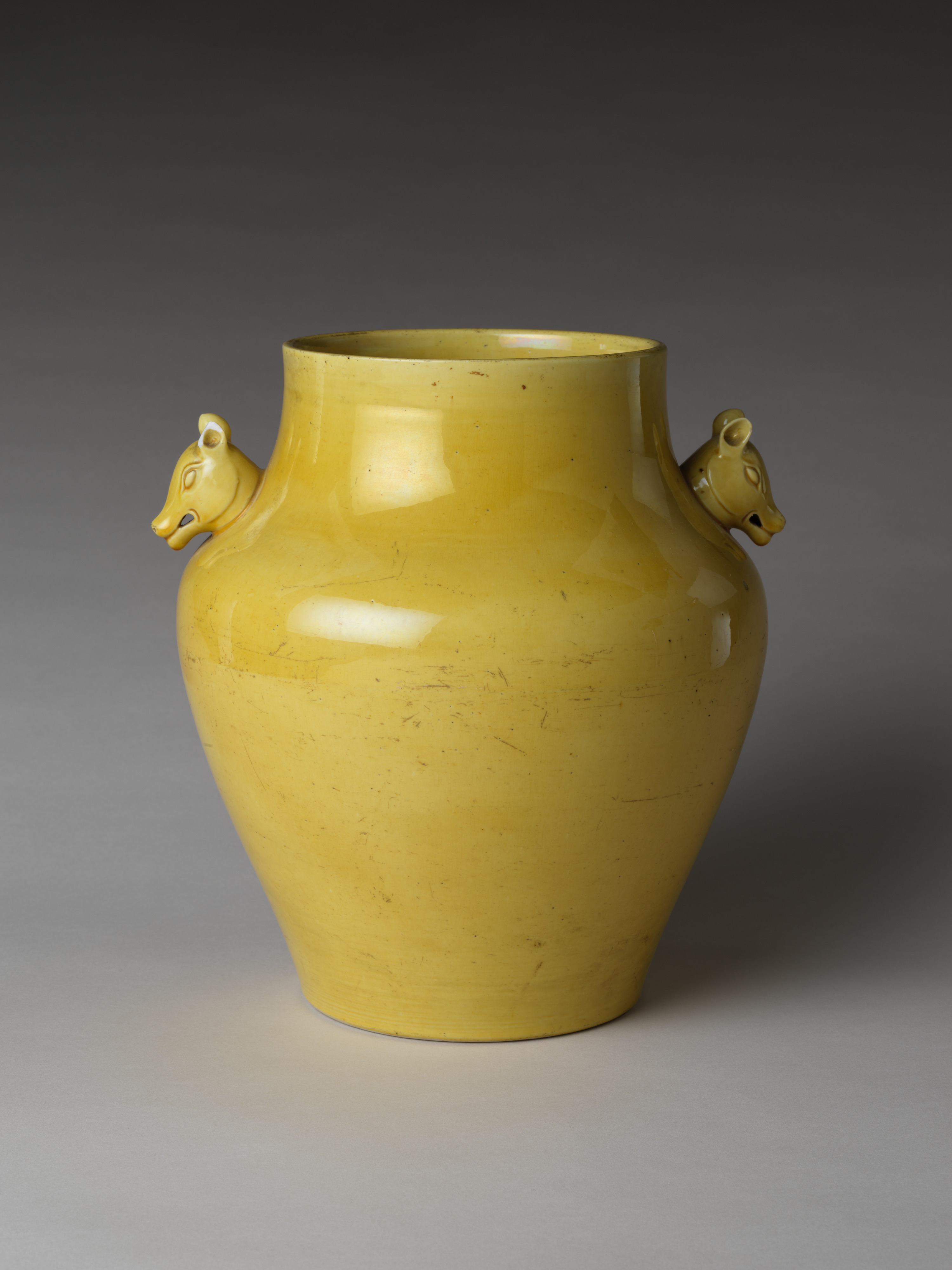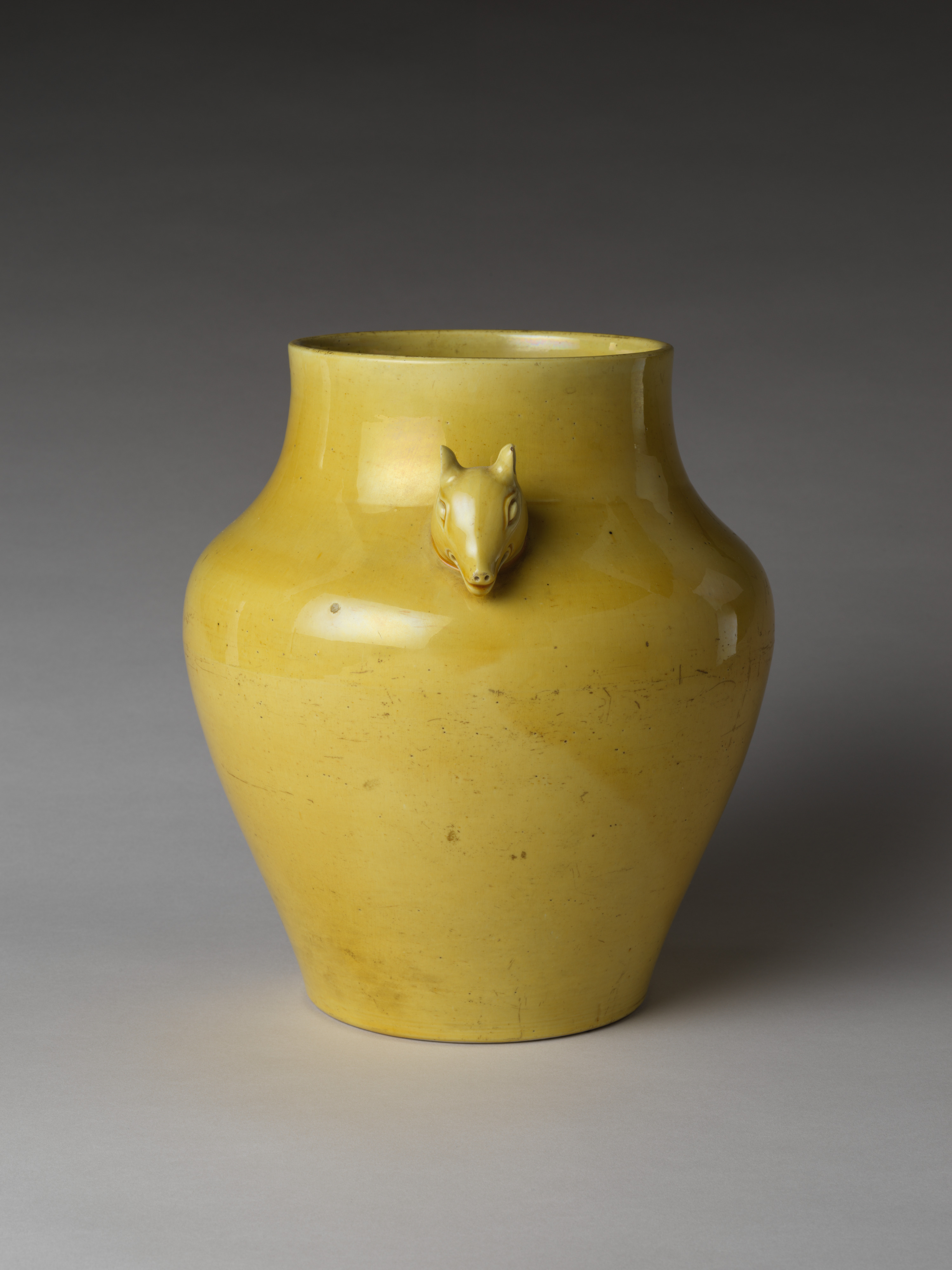Ceremonial vessel with animal heads
Not on view
This jar is a rare example of the kind of imperial porcelain made for ceremonial use from the early Qing dynasty. This type of vessel first appeared in the late fifteenth to early sixteenth century, when the imperial Ming court regulated porcelain vessels for ritual ceremonies at various state altars. An official ritual manual identifies this type of jar as a wine container (zhuozun). Although the vessel name comes from the ancient classics, the shape was new. The Ming court decided to use porcelain wares in place of the ritual bronze vessels used in ancient times. When the Qianlong Emperor (r. 1736–95) renewed the ritual manual in 1748, this type of vessel was reclassified as a wine container or great vessel (taizun). Different altars were assigned different vessel colors: blue for the Altar to Heaven, yellow for the Altar to the Earth, red for the Altar to the Sun, and light blue for the Altar to the Moon. Starting in the Qianlong period and continuing to the end of the nineteenth century, pieces bear reign marks on their bases. This piece still follows the earlier style of having an unglazed base with no mark. But the animal heads on this piece are distinct from those on Ming examples. The heads are close to those on Qianlong pieces and the vase’s light yellow glaze and form are also close to those from the early eighteenth century. Based on these similarities, this piece can be dated to no later than the early Qianlong period.
This image cannot be enlarged, viewed at full screen, or downloaded.
This artwork is meant to be viewed from right to left. Scroll left to view more.






